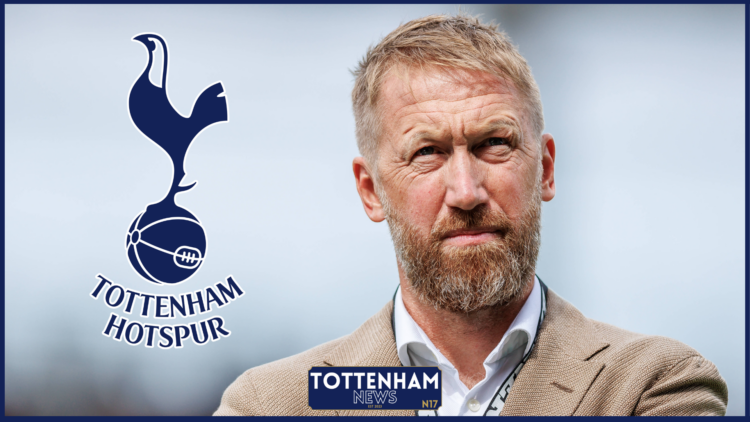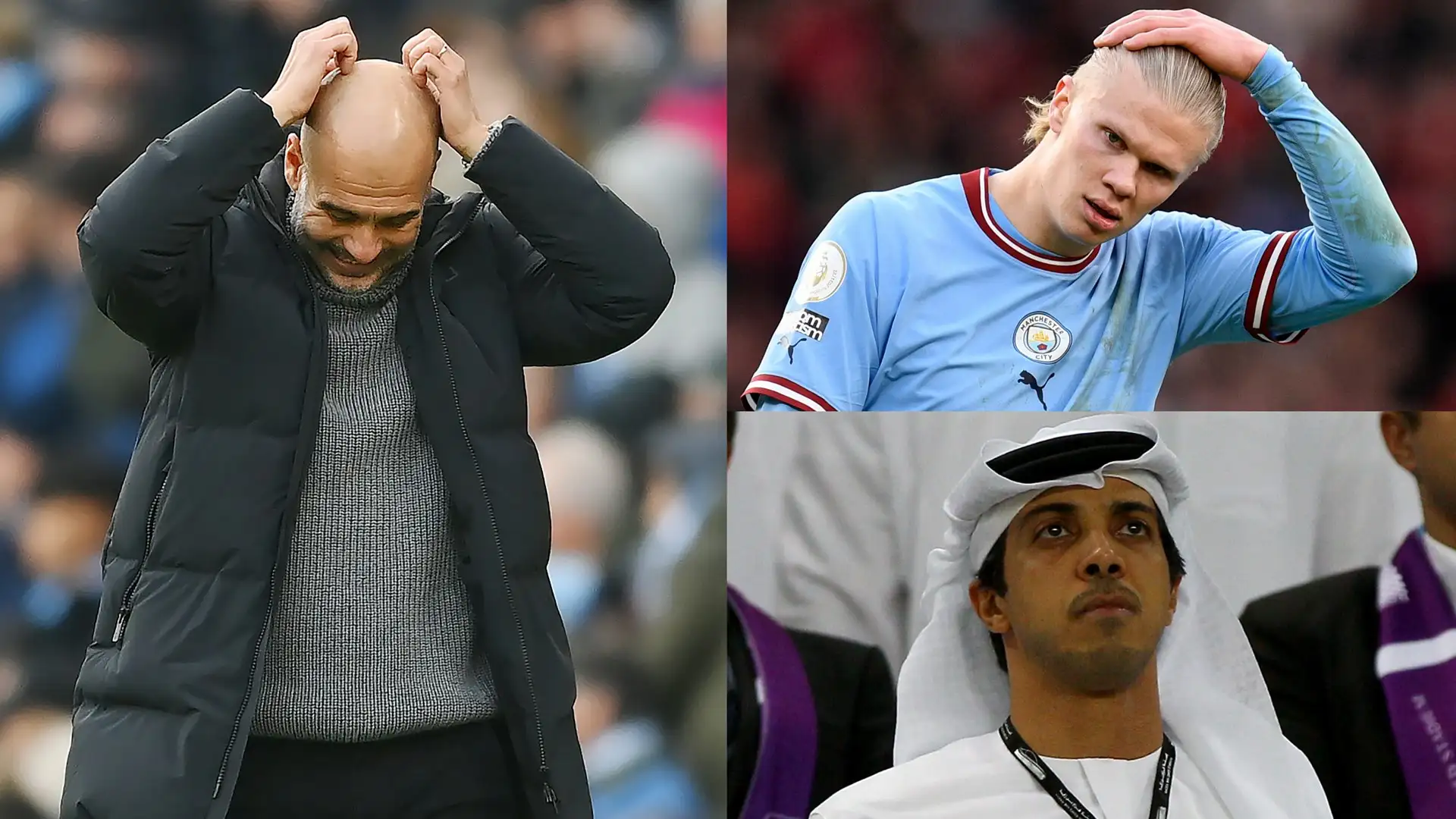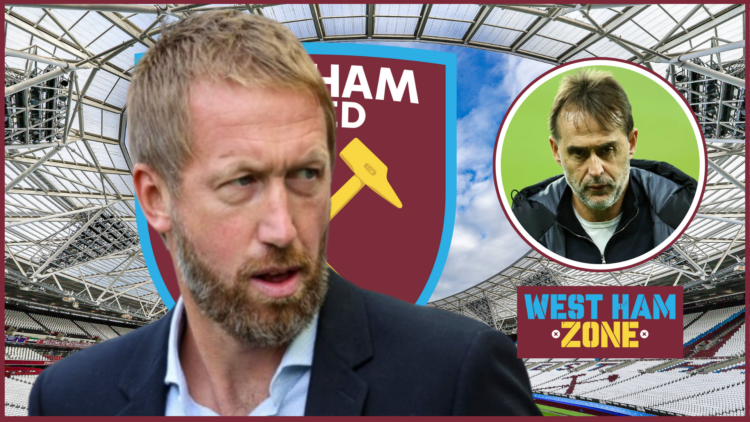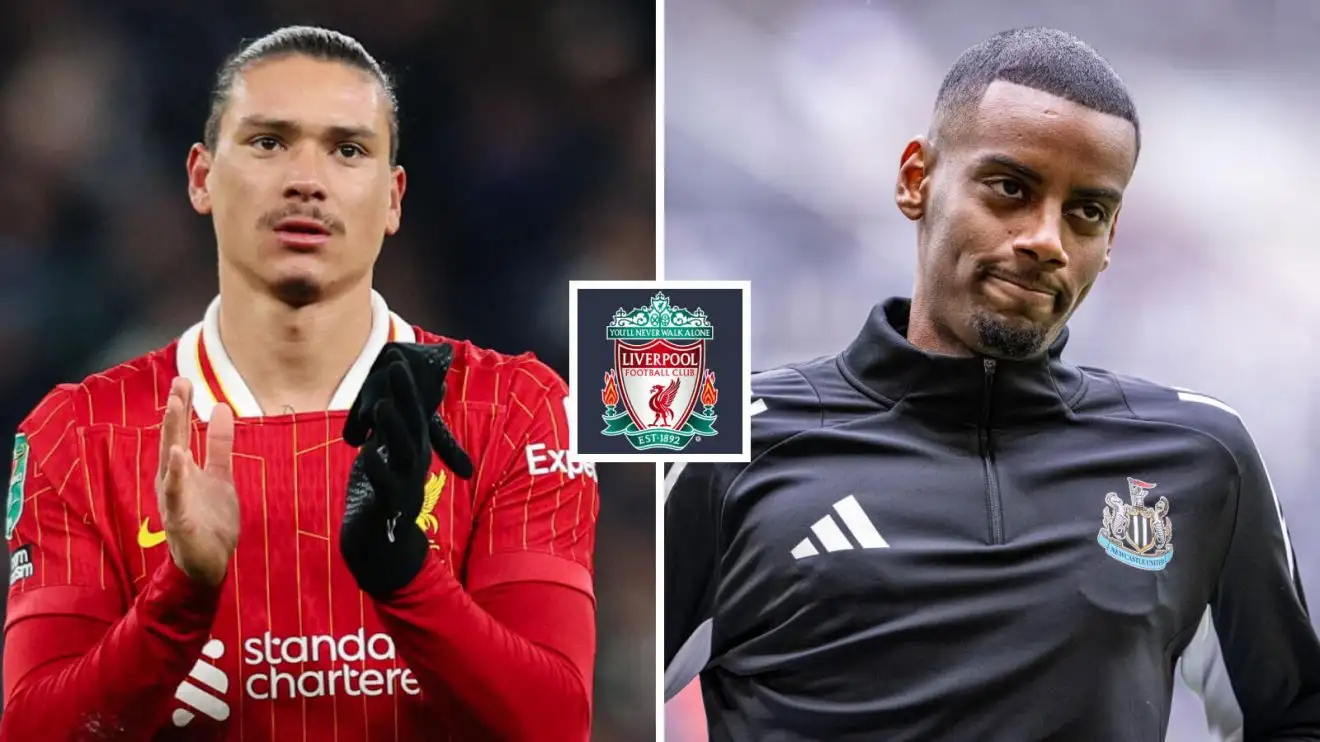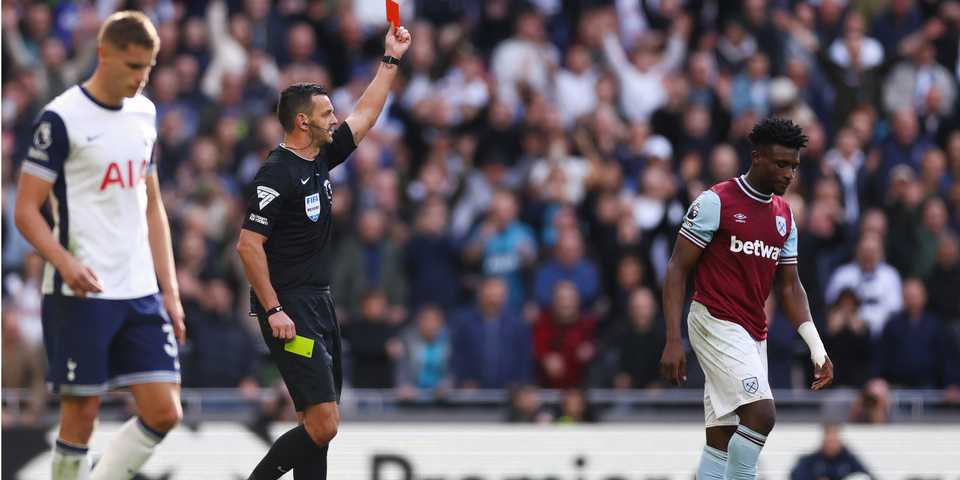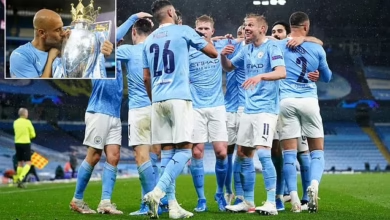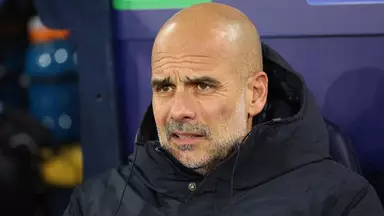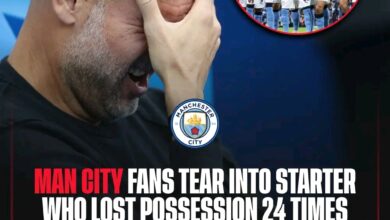Major developments on West Ham moves to sign two midfield stars after Man City announcement
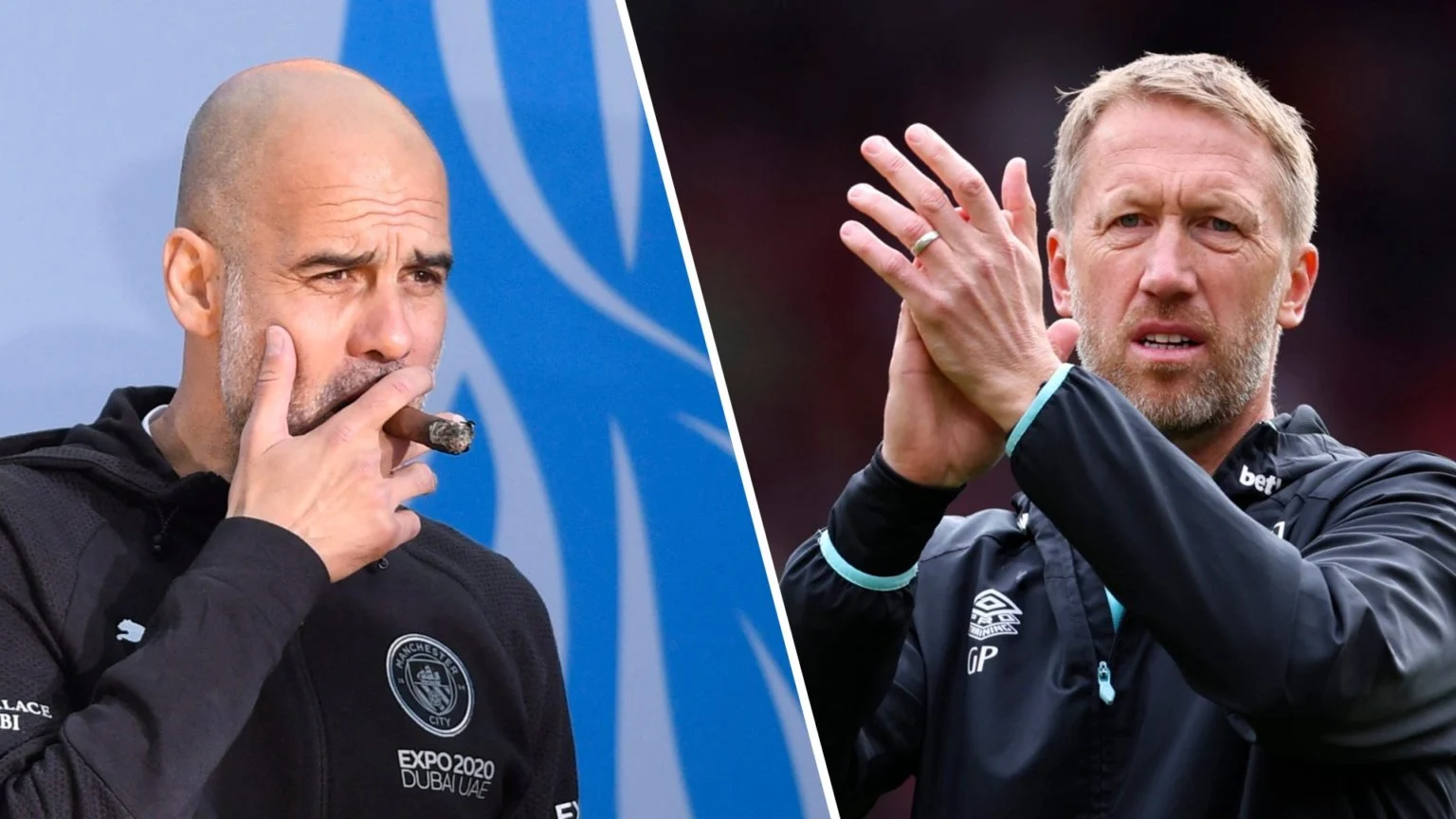
The Premier League transfer window has officially opened, and across England’s top clubs, managers are preparing for what promises to be a transformative summer. Among the most intriguing storylines developing is the parallel midfield overhauls taking place at both West Ham United and Manchester City, two clubs with vastly different circumstances but surprisingly similar needs.
Graham Potter, now settled into his role at the London Stadium, faces perhaps the most challenging rebuilding project of his managerial career. The West Ham midfield, once the engine room of David Moyes’ successful campaigns, has become a shadow of its former self. The aging core lacks the essential qualities that define modern Premier League football: guile, energy, and dynamism. These deficiencies have become increasingly apparent as the Hammers have struggled to maintain their competitive edge in recent seasons.
Meanwhile, at the Etihad Stadium, Pep Guardiola continues his relentless pursuit of perfection. Even with Manchester City’s recent successes, the Catalan tactician recognizes that squad refresh is essential to maintaining their dominance. The difference between the two clubs’ situations couldn’t be starker – while City operate from a position of strength, West Ham are rebuilding from necessity, constrained by the ever-present shadow of Profit and Sustainability Rules (PSR).
The PSR Challenge and Strategic Constraints
West Ham’s summer transfer strategy has been significantly complicated by PSR considerations. The financial regulations that have reshaped Premier League transfer activity have hit the Hammers particularly hard, forcing them to be creative in their approach to squad building. Unlike Manchester City, who can still operate with relative freedom in the transfer market, West Ham must carefully balance their ambitions with financial reality.
This constraint has made Potter’s task exponentially more difficult. The need for a complete midfield revamp is urgent and obvious to anyone who has watched West Ham’s recent performances. The current crop of players, while experienced, lacks the physical and technical attributes required for Potter’s preferred style of play. The energy levels that once characterized West Ham’s midfield have diminished, while the creativity and vision needed to unlock stubborn defenses have become increasingly rare commodities at the London Stadium.
The irony of the situation is not lost on observers. While Manchester City’s midfield boasts world-class talent and depth, it’s West Ham who desperately need the kind of comprehensive overhaul that their financial constraints make almost impossible to achieve. This disparity in resources and circumstances has created a fascinating dynamic in the transfer market, where both clubs are pursuing similar targets but with vastly different leverage and urgency.
Squad Philosophy and Size Reduction
Both Potter and Guardiola have made it clear that their summer strategies involve a counterintuitive approach to squad building. Rather than simply adding players to address weaknesses, both managers are committed to reducing their squad sizes. This philosophy reflects a growing understanding in modern football that bloated squads can be counterproductive to team cohesion and success.
Potter’s approach at West Ham is particularly interesting in this context. Coming from Brighton, where he worked with relatively small squads and developed a strong team identity, the new West Ham manager understands the importance of creating a tight-knit group where every player feels valued and integral to the team’s success. The challenge lies in achieving this while also addressing the significant quality gaps that exist within the current squad.
Guardiola’s similar philosophy at Manchester City comes from a different perspective but reaches the same conclusion. Having managed some of the world’s most talented players, he understands that maintaining squad harmony becomes exponentially more difficult as the number of players increases. The Spanish manager has learned that having too many quality players can create more problems than it solves, particularly in terms of keeping everyone happy and motivated.
This shared philosophy has created an interesting dynamic in the transfer market. Both clubs are essentially looking to trade quantity for quality, seeking fewer but more impactful additions to their squads. For West Ham, this approach aligns perfectly with their PSR constraints, while for City, it represents a strategic choice to maximize team cohesion and minimize internal competition issues.
The Jashari Saga: A Tale of Two Clubs
The pursuit of Ardon Jashari, Club Brugge’s highly-rated midfielder, perfectly illustrates the challenges facing West Ham in the current transfer market. The Swiss international, dubbed the ‘Swiss Casemiro’ by admirers, had been identified as Potter’s primary target for the midfield transformation. Jashari’s combination of defensive solidity, passing range, and leadership qualities made him an ideal candidate to anchor West Ham’s new-look midfield.
However, West Ham’s carefully laid plans were disrupted when Manchester City entered the fray. The moment Guardiola’s side expressed interest in Jashari, the dynamics of the transfer completely shifted. City’s financial muscle, Champions League football, and global prestige created a compelling package that West Ham simply couldn’t match. The Swiss midfielder’s head was turned, and the Hammers found themselves outmaneuvered by their Premier League rivals.
The speed with which City moved for Jashari highlighted the ruthless efficiency of their transfer operations. While West Ham had been courting the player for weeks, building relationships and presenting their long-term vision, City’s intervention was swift and decisive. Within days of expressing interest, they had effectively ended West Ham’s hopes of securing their primary target.
For West Ham, the Jashari disappointment represented more than just a failed transfer. It was a stark reminder of their position in the Premier League hierarchy and the challenges they face in competing with the elite clubs for top talent. The incident also highlighted the importance of having backup plans and alternative targets, something that Potter and the West Ham recruitment team had fortunately prepared for.
The Onyedika Opportunity: A Blessing in Disguise
The loss of Jashari to Manchester City’s advances initially seemed like a significant setback for West Ham’s summer plans. However, as often happens in football, what appeared to be a disappointment may actually prove to be a blessing in disguise. The forced pivot away from Jashari has opened up new opportunities and potentially better fits for Potter’s tactical vision.
Raphael Onyedika, Jashari’s Club Brugge teammate, has emerged as the primary beneficiary of this situation. The Nigerian defensive midfielder, who had been somewhat overshadowed by the Swiss international’s profile, suddenly finds himself in the spotlight as West Ham’s new number one midfield target. This shift in focus may ultimately prove to be advantageous for all parties involved.
Onyedika’s profile as a player offers several advantages over Jashari that may be particularly relevant to West Ham’s current situation. His physicality and athleticism are arguably better suited to the demands of Premier League football, while his age profile suggests greater potential for development and resale value. The Nigerian international’s combative style and energy levels align perfectly with Potter’s vision for a more dynamic West Ham midfield.
The financial implications of targeting Onyedika over Jashari are also significant for PSR-constrained West Ham. While both players command substantial transfer fees, Onyedika’s lower profile and different market dynamics may make him a more attainable target. This could allow West Ham to allocate resources more effectively across their squad rebuilding project.
Potter’s Midfield Revolution: The Onyedika Factor
Graham Potter’s tactical approach has always emphasized high-energy, technical football, and Onyedika’s skill set appears tailor-made for this system. The Nigerian midfielder’s ability to break up play, distribute the ball effectively, and provide energy in the middle of the park addresses several of West Ham’s current weaknesses simultaneously.
Potter’s experience with similar players at Brighton has shown his ability to develop defensive midfielders into key components of successful teams. His work with players like Yves Bissouma and Moisés Caicedo demonstrated his knack for improving players’ positional awareness, passing accuracy, and overall tactical understanding. Onyedika could be the next beneficiary of Potter’s developmental expertise.
The West Ham manager’s vision for his midfield revolution extends beyond just individual player acquisitions. Potter is looking to create a more cohesive, energetic unit that can both protect the defense and contribute to attacking play. Onyedika’s versatility and work rate make him an ideal candidate to anchor this new system while providing the platform for more creative players to flourish.
The Nigerian’s leadership qualities, demonstrated through his performances for both club and country, add another dimension to his appeal. Potter recognizes that rebuilding West Ham’s midfield requires not just technical ability but also mental strength and character. Onyedika’s experience in high-pressure situations and his ability to organize those around him could prove invaluable in this regard.
The Broader Transfer Strategy
West Ham’s interest in Onyedika represents just one component of a broader transfer strategy designed to address multiple areas of weakness within the squad. The midfield overhaul is part of a comprehensive approach that seeks to balance immediate needs with long-term sustainability and growth.
Potter’s strategy involves identifying players who can grow into the club while immediately improving the first team. This approach recognizes West Ham’s unique position in the Premier League ecosystem – a club with ambitions of European competition but without the resources of the traditional top six. The focus on younger, hungrier players who can develop and potentially increase in value aligns perfectly with both sporting and financial objectives.
The two-pronged approach of targeting both Onyedika and maintaining interest in other Club Brugge players demonstrates the sophistication of West Ham’s current recruitment strategy. By building relationships with specific clubs and focusing on particular markets, the Hammers can maximize their limited resources while increasing their chances of successful acquisitions.
This strategic approach also reflects Potter’s influence on the club’s transfer policy. His experience in identifying and developing talent has clearly informed West Ham’s approach to the market, moving away from the more scattergun approach of previous windows toward a more focused and strategic methodology.
The Club Brugge Connection
The focus on Club Brugge players represents a calculated strategy by West Ham to target a specific market segment. The Belgian club has established itself as a consistent developer of talent, with a track record of nurturing players who can make the step up to major European leagues. This reputation makes them an ideal partner for a club like West Ham, seeking quality players at relatively reasonable prices.
The relationship between West Ham and Club Brugge has been developing over several months, with the English club’s scouts becoming regular visitors to Belgian matches. This sustained interest has allowed the Hammers to build comprehensive profiles of multiple players, creating options and alternatives that have proven crucial in the wake of the Jashari disappointment.
The Belgian connection also offers practical advantages in terms of player adaptation. Club Brugge’s playing style and tactical approach share similarities with what Potter is trying to implement at West Ham. This means that players transitioning from Belgium to England may face a shorter adaptation period, potentially contributing more quickly to their new team’s success.
Furthermore, the financial dynamics of the Belgian market align well with West Ham’s PSR constraints. While Club Brugge commands significant fees for their best players, they remain more reasonable than equivalent talents from other major European leagues. This price differential could prove crucial in allowing West Ham to complete their midfield overhaul within their financial parameters.
Manchester City’s Unintended Assistance
Ironically, Manchester City’s intervention in the Jashari transfer may have inadvertently helped West Ham’s broader transfer strategy. By forcing the Hammers to pivot to alternative targets, City’s move has potentially led Potter’s team toward better fits for their specific needs and circumstances.
The domino effect created by City’s Jashari pursuit has opened up opportunities that might not have otherwise existed. With their primary target no longer available, West Ham has been forced to cast their net wider, potentially uncovering gems that were previously overlooked. This forced diversification of targets could ultimately strengthen their negotiating position and increase their chances of successful acquisitions.
City’s move also highlights the different approaches taken by clubs with varying resources. While Guardiola’s team can afford to target specific players and pay premium prices, West Ham must be more strategic and flexible in their approach. This difference in methodology, while challenging, can sometimes lead to more creative and ultimately successful solutions.
The psychological impact of being forced to move away from Jashari may also prove beneficial for West Ham’s remaining targets. Players like Onyedika, who might have previously seen themselves as second choices, now find themselves as primary targets with all the attention and resources that entails. This shift in status could prove crucial in convincing quality players to join the West Ham project.
The Broader Implications for Premier League Transfers
The West Ham-Manchester City dynamics around the Jashari transfer reflect broader trends in the Premier League transfer market. The concentration of resources among the top clubs continues to create challenging conditions for mid-tier teams seeking to improve their squads. However, it also demonstrates the importance of strategic thinking and adaptability in modern football recruitment.
West Ham’s response to the Jashari situation showcases how clubs can turn potential setbacks into opportunities. Rather than simply accepting defeat, Potter and his team have used the disappointment as motivation to explore new possibilities and potentially discover better solutions. This resilience and adaptability are becoming increasingly important traits for clubs operating outside the traditional elite.
The situation also highlights the importance of building relationships and maintaining multiple options in the transfer market. West Ham’s ability to quickly pivot to alternative targets demonstrates the value of comprehensive scouting and recruitment planning. This approach allows clubs to remain competitive even when their primary targets are snatched away by more powerful rivals.
Looking Forward: The Double Deal Possibility
Recent developments suggest that West Ham’s revised strategy may actually lead to a more comprehensive midfield overhaul than originally planned. The focus on Onyedika, combined with continued interest in other Club Brugge players, raises the possibility of a double deal that could transform the Hammers’ midfield in one decisive move.
The potential for acquiring multiple players from the same club offers several advantages. It could reduce overall transfer costs through bundled negotiations while ensuring that new signings arrive with existing understanding and chemistry. For a club like West Ham, seeking to rebuild quickly while maintaining team cohesion, this approach could prove particularly beneficial.
Potter’s experience with similar strategies at Brighton has shown his ability to integrate multiple new signings effectively. His understanding of how to balance individual qualities with team dynamics makes him ideally suited to manage the complexities of a double deal. The prospect of adding two complementary midfield players simultaneously could accelerate West Ham’s transformation timeline significantly.
The financial implications of a double deal, while substantial, could actually prove more manageable than separate negotiations for individual players. By consolidating their midfield spending into one comprehensive package, West Ham can better manage their PSR compliance while maximizing their competitive improvement.
Conclusion: A New Chapter for West Ham
The developments surrounding West Ham’s midfield targets represent more than just transfer news – they signal a new chapter in the club’s evolution under Graham Potter. The initial disappointment of losing Jashari to Manchester City has catalyzed a more strategic and potentially more successful approach to squad building.
The shift toward Onyedika and other Club Brugge targets demonstrates West Ham’s growing sophistication in the transfer market. Rather than competing directly with the Premier League’s elite for marquee signings, the Hammers are carving out their own niche, focusing on players who fit their specific needs and circumstances.
Potter’s influence on this strategy is evident in every aspect of the approach. His emphasis on character, work rate, and development potential has clearly shaped West Ham’s target profile. The focus on younger, hungrier players who can grow with the club reflects his long-term vision for sustainable success.
The broader implications of these developments extend beyond West Ham’s immediate prospects. The club’s response to the Jashari situation provides a template for how mid-tier Premier League clubs can compete effectively in an increasingly challenging transfer market. Through strategic thinking, relationship building, and tactical flexibility, teams can still achieve their objectives despite resource constraints.
As the transfer window progresses, West Ham’s midfield revolution under Potter promises to be one of the most intriguing storylines to follow. The combination of necessity, opportunity, and strategic thinking has created the conditions for potentially transformative change at the London Stadium. Whether this translates into on-field success remains to be seen, but the early signs suggest that West Ham’s new approach to the transfer market may have uncovered the key to unlocking their potential in the modern Premier League landscape.
